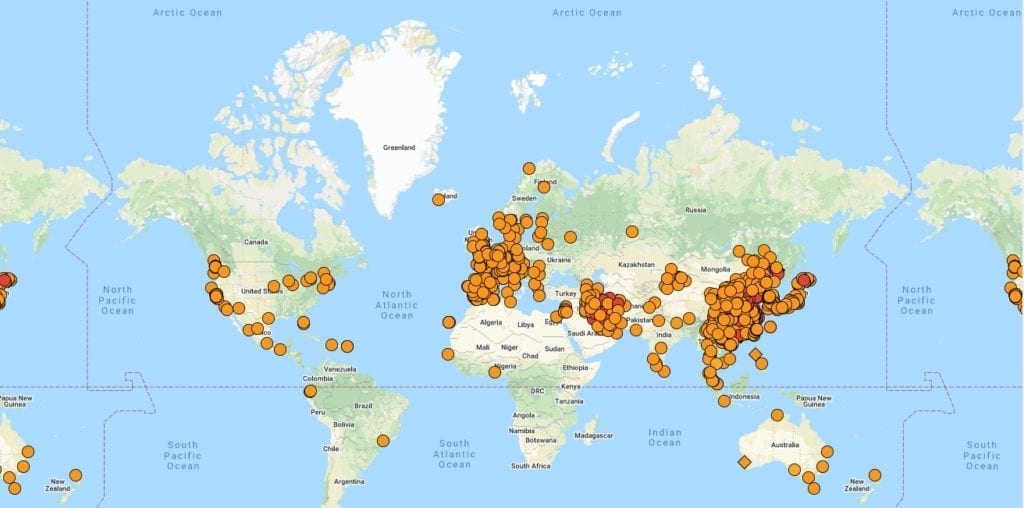One thing we know for sure about the coronavirus is that the outbreak is continuing to escalate. Our news feeds and channels are inundated with articles and updates from a plethora of sources.
While countries scramble to try to slow down the spread of the virus, it can be difficult to get reliable up-to-date reporting.
But thanks to the genius of one 17-year-old we can easily access the latest COVID-19 statistics from around the world.
Avi Schiffmann, a high school student from Washington state, has created a website to monitor and track the coronavirus.
Launched in December 2019, it is now being accessed by millions of people a day. The Coronavirus Dashboard at NCoV2019.live gives users up-to-the-minute data on the total number of confirmed cases, serious cases, death toll, and total recovered from the 116 countries currently affected.

It tracks global statistics by country and further breaks the data out into regions, including states and provinces. The information is sourced automatically from local health departments and cross-checked with the Center for Disease Control, the World Health Organization, and BNO News.
The website also hosts an interactive Google map, Twitter feed, and travel advisories. Additionally, it provides facts about the coronavirus, such as symptoms, how it spreads, and preventative measures.

The eldest child of a physician mother and a biologist father, Schiffmann became interested in the virus before it became a household name.
He built his website over Christmas when there were fewer than 1,000 confirmed cases in China. Since then the virus has reached pandemic proportions and is now affecting 141,400 people and counting.
In an interview with TODAY Parents he says:
“I thought it would be cool if there was a website that could pull in all the information from all kinds of (sources). I mainly wanted to create something that would show the data as accurately as possible because there has been a lot of misinformation.”
The website is constantly evolving.
Schiffmann spends up to 6 hours a day working on improvements to the site. He is currently working on coding to include graphs comparing the COVID-19 outbreak to historical pandemics, a vaccine tracker, and translation of the site to 30 different languages.
He is a self-taught coder who gleaned most of his knowledge from online tutorials and networking with online communities. And while he may be a genius behind the keyboard his high school marks don’t necessarily reflect this.
“My grades aren’t so good. I do what I have to to pass my courses. I spend 100 percent of my time on computer stuff.”
And the world is glad he does. He is being inundated with messages from all over the globe.
“I am getting 1,000 messages a day. Some are from people thanking me for the site, some are from media outlets reaching out for interviews, and many are from PhDs who have suggestions for information I could add.”
He also receives messages from people who spot any inaccuracies. Messages he relies on to act as an extra layer of protection for providing accurate data to the masses.
When a bug in the program mistakenly doubled the number of coronavirus cases, he received hundreds of messages from followers, leading to a quick fix.
Schiffmann’s main objective for his website is to ensure that people are getting clear and concise information. It’s also important to him that he gives a balanced picture of the virus.
Not only does he include the total number of active cases, but he also gives real-time data on the number of people that have recovered. A number that is reassuring in its size.
Schiffmann says:
“I thought it would be cool if we could have the numbers of those who recovered. It shows that it is not all negative. The recovery number is big.”
Since tracking COVID-19, the 17-year-old says that he doesn’t overly fear the virus. What he fears is the spread of misinformation. Something which he is working hard to combat.
As for what he plans on doing after the pandemic has slowed down? That’s yet to be determined.
He has so far received “hundreds of internship and job offers from the health sector, startups, and investors.” For now, he will continue working on providing the public with the latest statistics on the virus.
Knowledge is power. The more transparent the governments are and the more accurate information we have the better we can make informed decisions on how we react to the global crisis.
Knowing how quickly it is spreading and where it is spreading goes a long way in showing us where and how we need to act. What we thought about it yesterday may not be what we think today.
The reality is that people are dying from the coronavirus. But they are also recovering from it too. Having a resource that gives us the full picture enables us to make the best choices for our families and our communities.











